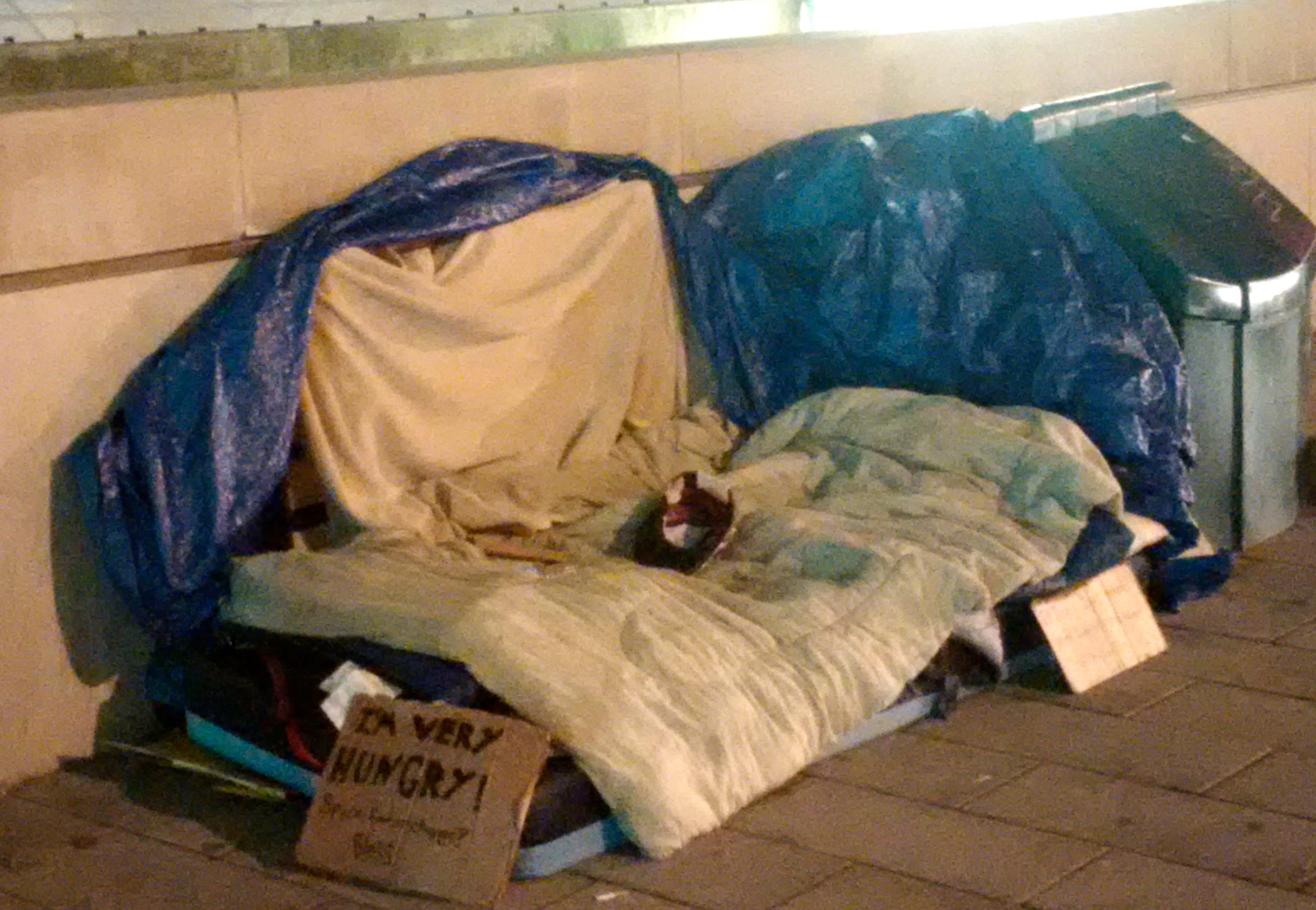Winter always brings a heightened sense of urgency for Toronto’s homeless yet few useful solutions. This year, the evidence that we need more emergency shelters has never been stronger.
While we wait, seemingly forever, for a national housing program to be announced homelessness has only worsened.
Across Canada people have been abandoned outside. In Toronto, hundreds, maybe a thousand people are forced to live outside in parks, ravines, under bridges and on city sidewalks. The situation meets the World Health Organization definition of a humanitarian disaster.
In Toronto one immediate relief measure is only a phone call away. Mayor John Tory could request Harjit Sajjan, the Minister of National Defence, to allow the city to use one or both of the federal armouries for an emergency shelter. Former mayors Mel Lastman and David Miller did exactly that during their terms of office and the Fort York and Moss Park Armouries were opened a total of four times, sheltering hundreds and undoubtedly saving countless lives. Other Canadian mayors could take similar action.
While the shelter crisis is dire this year, the problem is not new.
Toronto is what I call the epicentre of the homelessness disaster. Toronto’s shelter system is beyond capacity and has been since 2003 when city council passed a motion by then councillor Jack Layton that city shelters should not exceed a 90 per cent capacity. This policy win occurred after he showed council a scandalous video of overcrowding in an emergency shelter. In 2013, after desperate pleas by activists and health workers, city council reaffirmed the 90 per cent motion a second time. Yet, not once in the last thirteen years has that number been achieved across the shelter system.
The resulting neglect by the city has resulted in catastrophic conditions.
City shelters are full and routinely turn people away.
The city has never modernized shelters and still shelters people in dormitory style rooms and relies on bunk beds to sleep more people in tight spaces. There is not even a best practice policy that recognizes new shelters should have a one person per room policy. During cold alerts the city adds mats to already crowded shelters. During heat alerts only tables and chairs at cooling centres. Money for this latter program eliminated in the proposed 2017 city budget.
This overcrowding and underfunding equate to unhealthy shelter conditions which have only fueled disease outbreaks including tuberculosis and what is known as the “winter vomiting” Norwalk-type virus. The tuberculosis outbreak actually killed several men, leading to an inquest in 2004. This year Seaton House, the largest men’s shelter in Canada, suffered through a Group A Streptococcus outbreak that began in February and is yet to be cleared ten months later. The only metaphor to describe these conditions is “the canary in the mineshaft is screaming.”
The mission of the Toronto’s Shelter, Support and Housing Administration, according to their web page, is to contribute to healthy communities by ensuring that people have a range of shelter options.
One of the shelter options the city has relied on every winter for the last 30 winters is the volunteer run Out of the Cold (OOTC) program. Instead of creating needed new shelters the city allowed the OOTC to function as an overflow and second tier shelter system.
Shockingly, it is second tier. This winter the OOTC program will provide over 880 “bed nights” per week — but there are no beds. Instead, people are forced to sleep in large gymnasium type rooms, on mats. None of the facilities provide adequate shower or washroom facilities. This program doesn’t even have to meet the city’s own Toronto Shelter Standards, which include properly trained staff. Hundreds of people take part in a nightly migration to the next OOTC site, with no guarantee they will get in, and if they get in they still face poor conditions. No lessons learned from the SARS outbreak here as Toronto Public Health conveniently turns a blind eye to an environment that is a recipe for disease transmission. It only gets worse. In February 2016 there were two deaths — a 31-year-old woman and a 41-year-old man within a 48 hour period in two OOTC sites.
All of these concerns, which also play out across the country, have been presented and documented for years in deputations, tours of facilities, documentary films, in the media and at inquests.
The climate, and I don’t mean the weather, is harsh today if you’re homeless and in need of shelter. Rapid gentrification in Toronto has resulted in several shelter closures while rabid “Not In My Backyard” NIMBYism blocks the efficient opening of desperately needed new shelters. American style housing first programs like Streets to Homes take money from shelter and outreach programs and become a tool of gentrification, housing people out in suburbs in still unaffordable housing and far from needed food banks and resources.
We seem to allow our city governments to put a lot of energy into hurting people. Last month I saw “eviction” notices given to homeless people sleeping outside. Perhaps the most morally bankrupt policy direction across the country has been the funding cuts to community agencies that do valuable street outreach. Most of them are no longer allowed to provide survival supplies such as sleeping bags, blankets or hot food to homeless people. You may ask why? Inspired by Housing First, city officials say that “enables homeless people to stay outside.” I call it intentional neglect.
I say let’s enable people to come inside by opening the armouries!
Like this article? Please chip in to keep stories like these coming.
Image: Cathy Crowe




